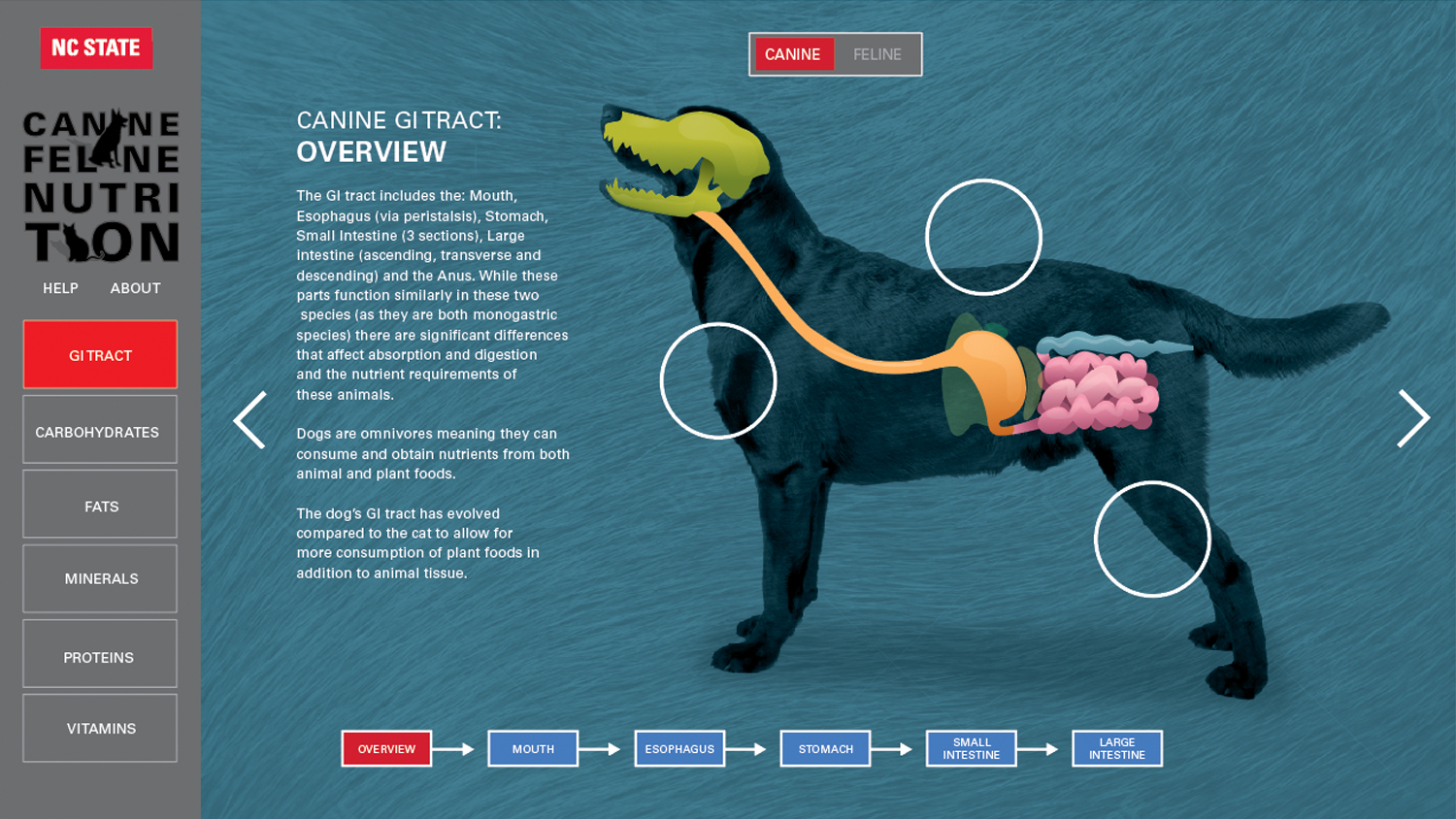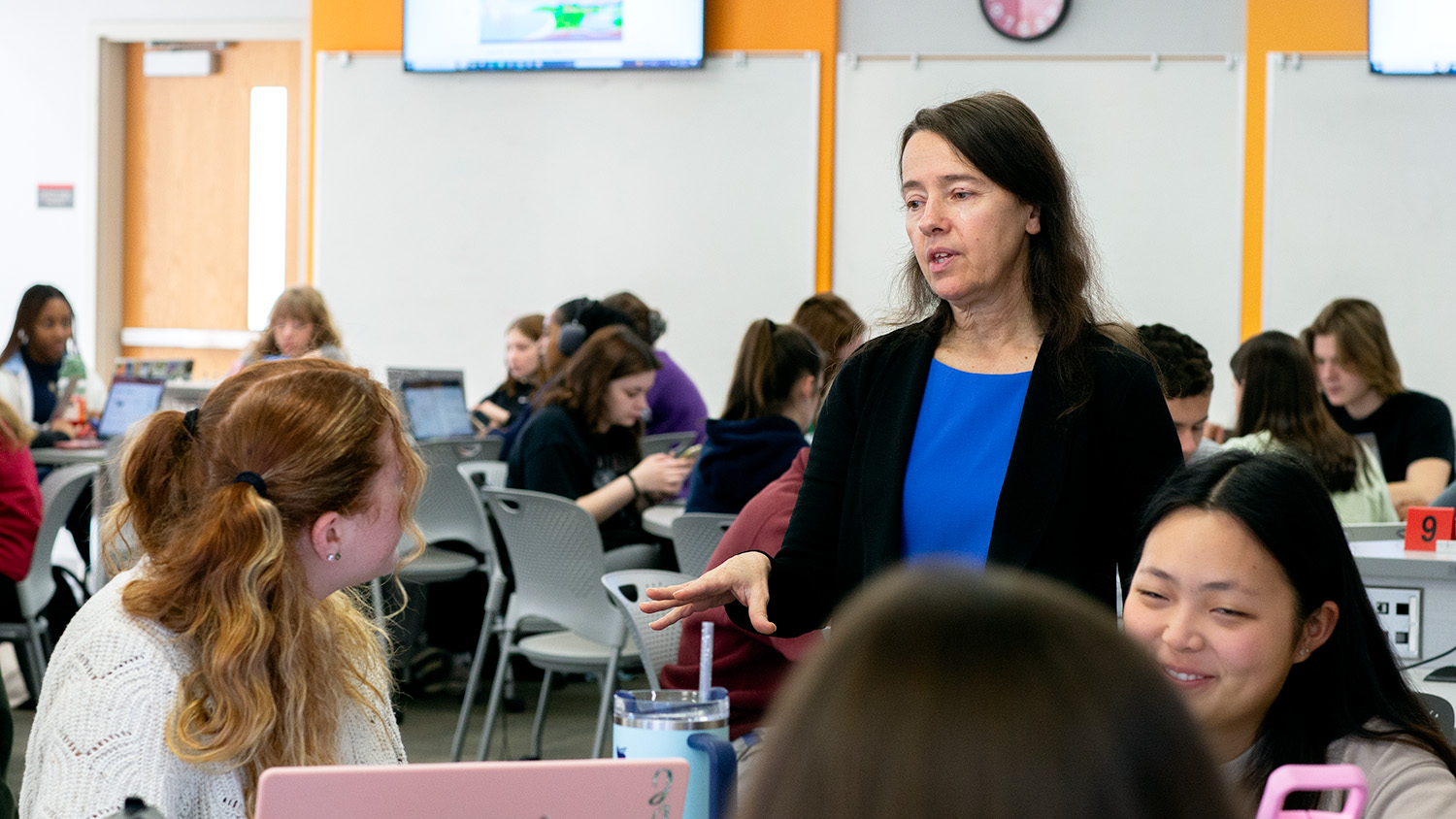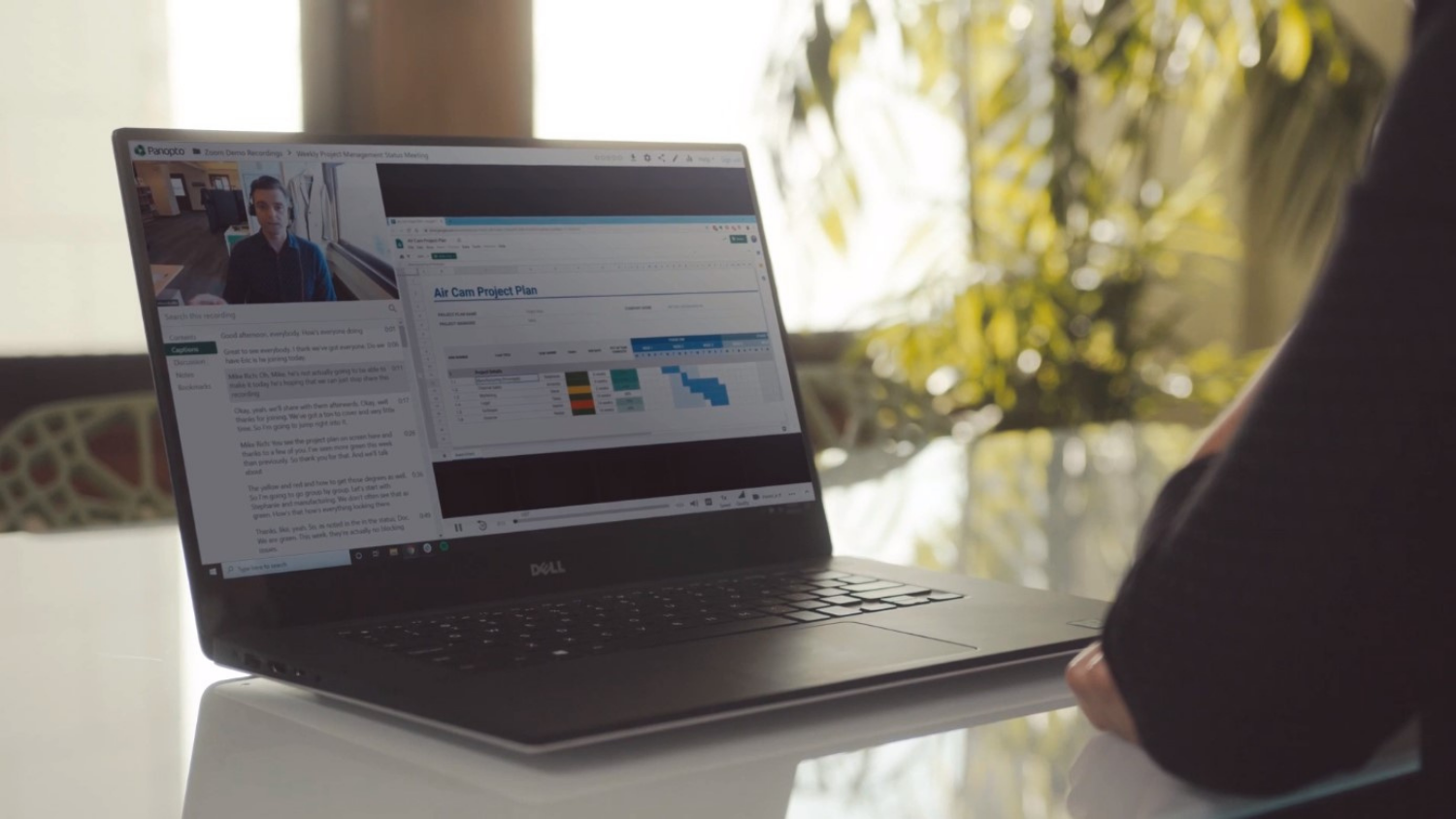A Work in Progress: Animal Nutrition for Companion Pets

For the Advanced Canine and Feline Nutrition (ANS 590) course in the College of Agriculture and Life Sciences, the end goal is for students to be able to simulate the creation of a specialized cat or dog food. From adding in the appropriate nutrients to designing a label, students will get a better understanding of companion animal nutrition, a topic that is very specialized and sought after.
With only a handful of experts in the country, Department of Animal Science’s own Teaching Assistant Professor Kimberly Ange-van Heugten is one of them. With assistance from graduate student Tarra Freel and DELTA via a Distance Education Course Grant, Ange-van Heugten developed a new course focused on companion animal nutrition.
The course was created to bridge the gap between students who are completing a master’s degree while planning to ultimately attend veterinary school and the graduate students who will choose other career paths, potentially feeding future companion animals. The specific companion animal track provided within this course will give students the knowledge necessary for a variety of career fields not previously addressed at NC State or at other universities.
DELTA’s project team included Associate Director, Instructional Design and Development Daniel Davis; Senior Educational Media Designer Donnie Wrights; Associate Director, Project Coordination Merranie Zellweger; Senior Interaction Designer/Developer David Tredwell; and Multimedia Web Designer Jennafer Pettit.
A web tool showing the gastrointestinal (GI) tract of a cat and a dog was one of the main deliverable created for the course. The other deliverables included a timeline resource tool, peer review paper discussions and a peer review exercise for the final project.
Interactive Web Tool
Helping students to understand the differences between the GI tracts of cats and dogs was something the DELTA team wanted to make simple for students in ANS 590. Wrights created an online web tool that allowed students to explore the GI tracts of cats and dogs. The interactive tool is equipped with graphics, short paragraphs of information and much more.
According to Wrights, there is a lot of information about nutrition for companion animals available from various sources. It was hard for students to interpret the differing visuals, so the DELTA team created a tool that is easy to use and consistent with the material being taught in lecture.
With the extensive amount of information available, it was important to distinguish the vital information students needed to know at each stage of the GI tract for the cat and the dog individually.
“We did a thorough audience analysis to really think about the makeup of the students and what they really needed to know,” said Davis. He worked with Ange-van Heugten and Freel to determine the concepts that could benefit from additional media as well as the important concepts for the final project.
“The tool focuses on how cats and dogs absorb nutrients, and how it’s actually very different between the two species,” said Wrights. He noted the interesting feature of the tool is students can switch between the cat and dog on the screen so they can compare and contrast each process.
Students are able to go into Moodle and select a link for the web tool. From there, students can choose to start at the beginning of the GI tract or they can choose a specific point in the system. This feature makes the tool an especially beneficial resource because students can revisit problem areas as many times as they need.
Throughout each step of creating the tool, keeping students engaged was important. The DELTA team worked to implement transitions from page to page within the tool as well as adding interactive portions where students can click an organ and explore it further.
“The goal for the tool is to break down complex ideas and make it more understandable for students. It can be used in lecture but will also be a tool students can use as a reference,” said Davis.
Other Key Deliverables
Using TimelineJS, the DELTA team created a timeline showing the history of companion animal food. From the beginning to current procedures, students are able to learn about various aspects of creating food for cats and dogs from domestication to regulations to nutrients.
“We were able to assign centuries and years and put information into the timeline that students can scroll through. Each point on the timeline can have images as well as a branded background so if students switch from the web tool to the timeline it will be familiar,” said Wrights.
To encourage interaction among online students, peer review activities were added to the course. Not only does peer reviewing make the class more scalable for the instructor, but it allows students to learn from each other by giving feedback.
The class will have around 20 students in its first semester, but Ange-van Heugten hopes to have 80-100 once the class is advertised and the first round glitches are addressed. Since this topic is an extremely popular area, Ange-van Heugten says the course will easily have a waiting list once graduate students around the country realize they can enroll.
DELTA Impact
Each piece of the project always kept the end goal in mind. In order to create their own cat or dog food, students had to be knowledgeable about the unique digestive systems of cats and dogs as well as the history of how these foods are created. The web and timeline tools are intended to give students the background they need to successfully create a specialized food for a companion pet.
“The course has students going in many different career directions and helps them work toward a final project that is meaningful and complex across various fields,” said Davis.
Not only will the web tool be meaningful for students in ANS 590, but Wrights hopes it will be able to impact others outside of the classroom. “It is a very specialized topic, and there is a very big need for this type of course and tool across the country,” he said.
In addition, Zellweger noted the diligence of the DELTA team in working to complete the project. “In just a year, the DELTA team worked with a massive amount of content and a great idea to help develop really beneficial assets, deliverables and tools,” she said.


